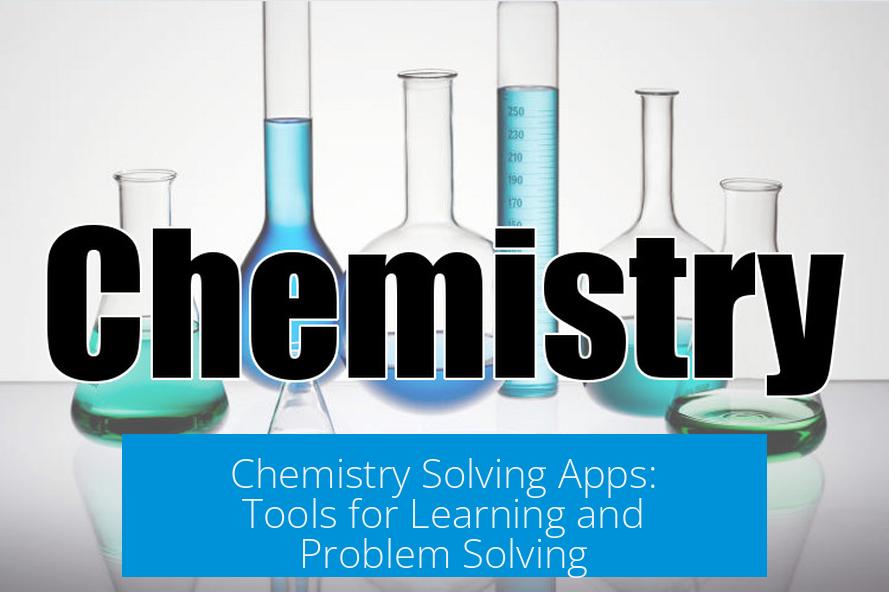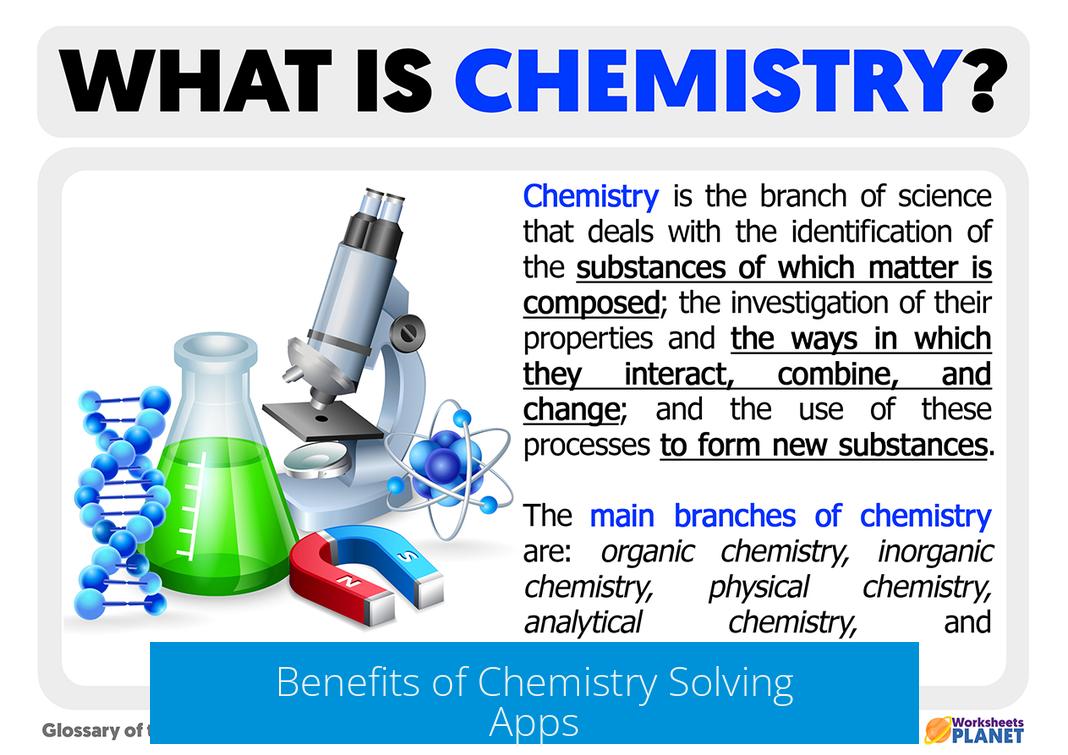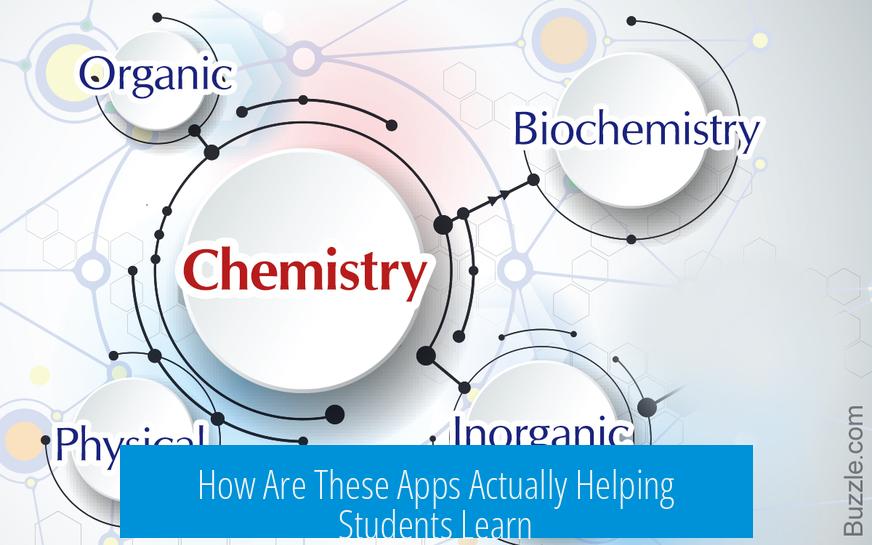Chemistry Solving Apps: Tools for Learning and Problem Solving
 Chemistry solving apps provide users with efficient solutions for a wide range of chemical problems, from basic calculations to complex molecular formula determinations. These applications support students and professionals in understanding chemical concepts and completing assignments more effectively.
Chemistry solving apps provide users with efficient solutions for a wide range of chemical problems, from basic calculations to complex molecular formula determinations. These applications support students and professionals in understanding chemical concepts and completing assignments more effectively.
Overview of DAVINCISOLVER
DAVINCISOLVER is a versatile AI-powered solver that extends beyond chemistry. It handles diverse topics including chemistry and math. Users report positive experiences, noting its ability to solve chemistry problems accurately. However, limited online information suggests it is a relatively new tool. Its AI-driven approach assists in interpreting chemical equations and formulas efficiently.
Example: Determining Molecular and Empirical Formulas
Consider the problem: A compound with a molecular mass of 104.06 u contains 21.63 g carbon, 2.40 g hydrogen, and 38.4 g oxygen. Chemistry solving apps can process such data to find both the empirical and molecular formulas.
- Convert mass of each element to moles by dividing by atomic masses.
- Obtain mole ratios to determine the simplest whole number ratio (empirical formula).
- Compare the empirical formula mass to the given molecular mass to deduce molecular formula.
Apps automate these steps, minimizing user error and saving time.
Academic Research and Future Developments
Academic efforts like those led by Professor van Vranken at UC Irvine aim to enhance chemistry problem-solving software. Their work focuses on deeper understanding and interaction with chemical problems rather than providing mere answer shortcuts. This research is important for creating smarter, educationally valuable chemistry solvers.
Benefits of Chemistry Solving Apps

- Provide step-by-step solutions for complex problems.
- Help visualize chemical structures and reactions.
- Offer immediate feedback and learning support.
- Allow practice with diverse chemical problems.
Key Takeaways
- DAVINCISOLVER is a promising AI chemistry solver with broad capabilities.
- Chemistry apps accurately solve formula-related and calculation problems.
- Academic research is advancing more intelligent chemistry solvers.
- These tools support learning, reduce errors, and improve problem-solving efficiency.
Why Chemistry Solving Apps Are Game Changers in Learning Chemistry
Chemistry solving apps are revolutionizing how students approach compounds, molecular formulas, and reaction equations. These apps tackle complex problems that traditionally required bulky textbooks and hours of manual calculation. Ever stuck trying to find the empirical formula of a compound? Chemistry apps can break that down fast and clearly.
Imagine this typical brain teaser: a compound with a molecular mass of 104.06 u consists of 21.63 g of carbon, 2.40 g of hydrogen, and 38.4 g of oxygen. What’s its empirical and molecular formula? For many students, this is a mini nightmare. But with chemistry solving apps, the answer isn’t just faster—it’s educational.
What Makes Chemistry Solving Apps Like DAVINCISOLVER Stand Out?
DAVINCISOLVER catches the eye for one reason: it’s not limited to chemistry alone. The app tackles a broad spectrum of problems from mathematics to chemistry and beyond. According to users, it is “really good,” despite limited online buzz. That hints at a fresh, relatively undiscovered tool that’s powerful in scope yet easy to use.
“Just try it bro, it’s not only chemistry. It’s everything,” one enthusiastic user recommends. Does that sound like an AI from your future study buddy? I think so.
Why is versatility a big deal? Because chemistry often intersects with math—stoichiometry, molar calculations, and balancing reactions need quick arithmetic and algebra skills. Instead of juggling multiple apps, DAVINCISOLVER offers a unified platform, cutting down on app-switching fatigue.
How Are These Apps Actually Helping Students Learn?

Some might worry these tools offer only shortcuts and discourage deep understanding. But the reality is different. When used well, chemistry solving apps allow students to focus on conceptual hurdles, not repetitive calculations.
| Benefit | Description |
|---|---|
| Immediate Feedback | Get step-by-step solutions instantly to see where you might have gone wrong. |
| Concept Reinforcement | Visual explanations help clarify tricky topics like molecular mass and formula determination. |
| Time Efficiency | Free up time from tedious math to focus on exam strategies or lab work. |
Consider the empirical formula problem above as an example. Instead of guesswork, students can upload the data into an app like DAVINCISOLVER, getting back the ratio of atoms, allowing them to verify their formulas confidently.
What’s Happening in Academia on This Front?
It isn’t all about instant answers. Research teams, like one led by Professor van Vranken at UC Irvine, are pushing forward chemistry problem-solving technology aimed at true learning aids—not shortcuts.
This shows a promising trend: chemistry apps are becoming smarter, modeling real understanding rather than just spitting out answers. So, if you want an app that grows with your learning needs, keep an eye on these projects.
Is There a Catch? Should You Rely Fully on These Apps?
It’s tempting to lean heavily on these apps. After all, they can solve problems quickly and accurately. Still, chemistry’s true mastery requires practice beyond what algorithms can replace. Apps like DAVINCISOLVER are fantastic tools, but chunking formulas into memory and building intuition happens only with effort.
Think of these apps like calculators. Can you do math without one? Sure. But with it, you get faster and make fewer silly mistakes. Just don’t expect the app to mimic your brain’s creativity or problem-solving flair.
How to Maximize Your Experience Using Chemistry Solving Apps
- Use apps as tutors, not crutches. Try to solve problems first, then use the app to check your work.
- Take notes on steps the app uses. This reinforces learning and aids memorization.
- Mix app use with traditional study. A balance prevents dependency and improves overall skills.
- Explore apps with broad functionality, like DAVINCISOLVER. This keeps your skills sharp across subjects.
- Follow advancements from academic research. Next-gen apps might soon offer personalized guidance, not just answers.
Have you ever struggled with a compound’s formula? These apps can make that problem vanish faster than you can say “stoichiometry.” Try them out and watch your confidence soar. And who knows? Maybe a little AI chemistry wizard will save your next study session.
What features make DAVINCISOLVER unique for solving chemistry problems?
DAVINCISOLVER handles chemistry and math problems using AI technology. It supports a wide range of subjects beyond just chemistry, making it a versatile tool for students.
Are chemistry solving apps reliable for academic research or just basic problems?
Some apps are designed mainly for basic problems or homework help. However, ongoing academic projects aim to improve these tools for deeper scientific use.
Why is there limited information about newer chemistry solving apps like DAVINCISOLVER?
Many such apps are recent and still developing. Limited exposure and reviews exist because they have not yet gained widespread use or attention online.
Can chemistry solving apps determine empirical and molecular formulas automatically?
Yes, apps can assist in calculating empirical and molecular formulas by analyzing element masses from compounds, helping students verify their manual work.





Leave a Comment